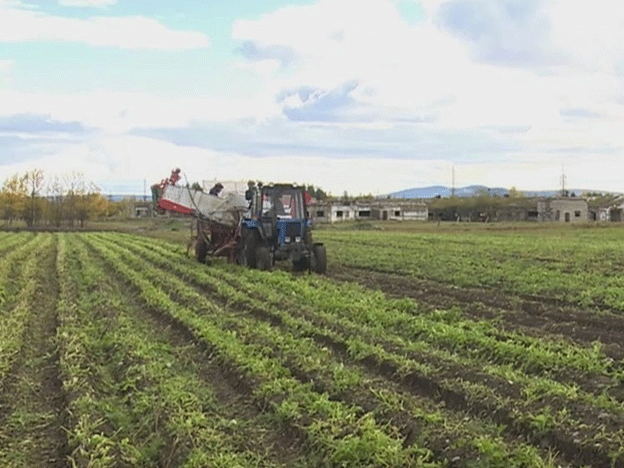Farmers in the Magadan region, known for its challenging agricultural conditions, have started their potato harvest and silage preparations for livestock. This year, the weather has been especially harsh, with cold temperatures, frosts, and frequent rains delaying the harvest. Magadan’s designation as a “high-risk agricultural zone” is clear this year as crops struggle to reach their full potential under unpredictable weather.
Harvesting Potatoes Under Adverse Conditions
According to Nikolai Koshelenko, the Minister of Agriculture and Food in the Magadan Region, the potato yield has varied widely across fields. On some farms, yields have been as high as 20-30 tons per hectare, while others have seen only 15 tons. Compared to previous years, these numbers indicate a decline, but under the circumstances, they are still considered respectable. In contrast, cabbage crops have fared better, yielding up to 100 tons per hectare, demonstrating resilience against the harsh weather.
The largest farm in the region, “Komarova,” located in the Ola River floodplain, is currently battling wet, stony soil to bring in its harvest. Despite these difficulties, farmers are managing to collect sizable potatoes that are now being sent to vegetable storage facilities for drying. However, time is of the essence. Weather forecasts predict more rain and even frost, forcing farmers to work quickly to finish the harvest before the onset of snow, which often arrives in early October.
Fields closer to Magadan have not fared as well. Frosts in August severely damaged crops like potatoes, carrots, and beets, leaving farmers with little to harvest. Even more concerning is the looming winter and the need to secure enough silage for a herd of over 2,000 cattle. Some of the silage fields were submerged during summer floods, and although the water has receded, the fields remain littered with stones and debris, making it difficult for machinery to operate.
The Importance of Silage for Livestock
Ensuring sufficient silage to feed livestock through the long, harsh winter is a top priority. The silage must be collected, compacted, and stored before the weather further deteriorates. Given the damage to some of the fields, farmers have had to improvise, sending cows out to graze in an effort to extend the available feedstock. However, this is only a temporary solution. The quality and quantity of the silage will directly impact the health and productivity of the cattle during the winter months, making the current harvest season even more critical.
The Agricultural Outlook for Magadan
Magadan’s farmers are accustomed to adversity, but this year has been particularly difficult. The combination of unpredictable frosts, heavy rains, and floods has taken its toll on both crop yields and animal feed supplies. While potatoes will make their way into regional stores, the harvest will likely fall short of last year’s levels. In addition, the loss of silage fields raises concerns about feeding livestock through the winter. The pressure to harvest before the snow arrives only adds to the stress of the season.
Despite these challenges, farmers in the Magadan region continue to adapt and find ways to maintain their operations. The resilience of the agricultural community, paired with ongoing improvements in technology and farming practices, offers some hope for future harvests in this harsh environment.
The 2024 agricultural season in the Kolyma region has been marked by cold weather, floods, and the ever-present threat of early snow, leading to a difficult but determined effort by farmers to harvest potatoes and stock up on silage. While yields are lower than last year, particularly for potatoes, the focus has shifted toward ensuring enough silage to sustain livestock through the winter. As farmers in this high-risk agricultural zone race against the clock, their resilience and ingenuity are being put to the test once again.
